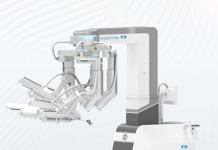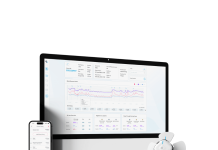London-based healthtech startup Sava Technologies Ltd. has raised $19 million in Series A funding, following a major clinical achievement for its proprietary microsensor platform. The round was led by Balderton Capital and Pentland Ventures, with new backing from Norrsken VC and JamJar Investments, and additional support from True, Italian Founders Fund, Athletico Ventures, and Exceptional Ventures.
This latest round brings Sava’s total funding to $32 million, including previous support from angel investors, the EU, and the UK Government.
Related: InspireMD brings in $58 million in funding for CGuard Prime carotid stent system
With this new capital, Sava plans to grow its team, increase manufacturing capacity, and fast-track the regulatory process for its first product, a pain-free, affordable, and accurate Continuous Glucose Monitor (CGM). The startup has rapidly expanded its team to over 60 people, including industry veterans who previously worked on Abbott and Dexcom’s leading CGMs.
Founded in 2019 by Imperial College London bioengineers Renato Circi and Rafael Michali, Sava is developing a wearable biosensor capable of detecting multiple biomarkers beneath the skin in real-time. As stated by co-founder Renato, “During their time at Imperial, they worked in one of the pioneering research groups that invented modern glucose strip technology. Their combined expertise in electrochemistry, biosensing, and medical device engineering laid the foundation for Sava’s next-generation biosensor platform.”
Sava’s proprietary technology is built around a multi-molecule microsensor that can continuously monitor key biomarkers under the skin and send real-time insights directly to a user’s smartphone. The company’s first product, an advanced CGM, targets the $11 billion+ glucose monitoring market, which is expanding by over 10% annually.
But unlike existing CGMs that are often costly, uncomfortable, and out of reach for many users, Sava’s wearable device is designed to be pain-free and cost-effective, aiming to make continuous glucose monitoring more widely accessible. Currently, only about 1% of people with diabetes use CGMs, despite the technology’s clear clinical benefits. Sava’s entry into this space could significantly expand adoption by lowering the barriers to access.
Sava’s vision is to develop a scalable, accurate, and accessible biosensor platform that enables early detection, continuous health monitoring, and smarter medical decision-making. Its pain-free CGM is just the beginning, one that could redefine how individuals engage with their health on a daily basis.
While glucose is the first target, Sava’s biosensor is designed with a modular, multi-analyte architecture. This allows it to detect multiple molecules, opening the door to a wide range of real-time health applications from performance tracking for athletes to long-term disease monitoring and early detection.
With growing interest from both consumers and the broader healthcare market, Sava’s technology stands to play a major role in the $100 billion+ global wearables market, projected to grow significantly by 2029. The company sees this as an opportunity to shift healthcare from a reactive model to a preventative and data-driven approach, where users can understand changes in their body before symptoms even appear.
When it comes to their future plans, Rafael added, “Our immediate focus is securing regulatory approval and launching our first product for people with diabetes. Over the next 3-5 years, we aim to expand our platform to track multiple biomarkers simultaneously, bringing real-time molecular health monitoring to the everyday consumer. Sava aims to expand the user base of CGM from 8.5M people today to billions worldwide.”
“This clinical trial marks a pivotal moment not just for Sava, but for the future of biosensing and personalised healthcare,” said Rafaël Michali, co-founder and co-CEO of Sava. “The data generated so far has shown that our technology has the potential to match the performance of leading CGMs in the market today, without the invasiveness or high cost of filament-based systems. It paves the way for a completely novel approach to biosensing that can redefine the way we approach not only chronic disease management, but any health goal.”






